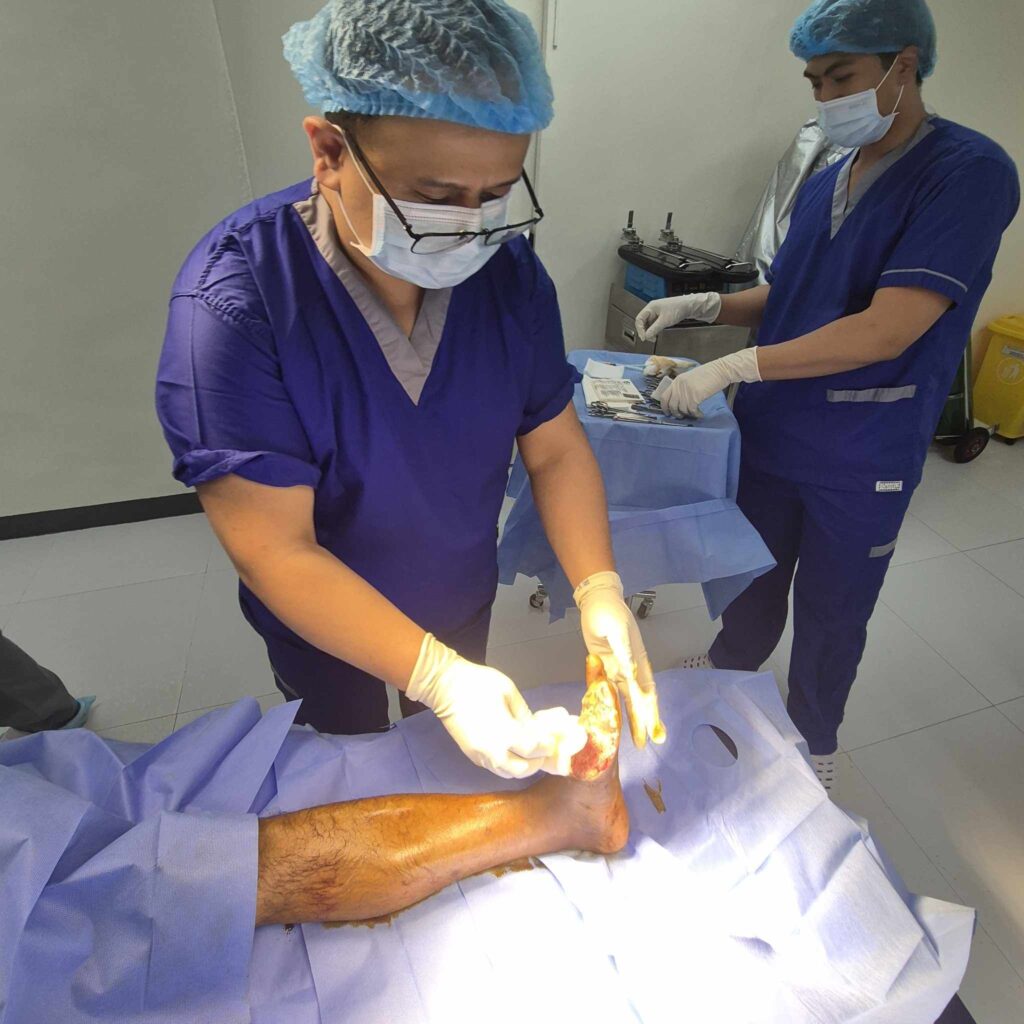Maintaining healthy ankles and feet is crucial for overall mobility and quality of life. Foot and ankle pain can stem from various factors, including trauma, repeated wear and tear, or even poor footwear choices. Understanding common injuries and their treatment options can help individuals regain mobility and prevent future issues. In this post, we’ll explore various ankle and foot injuries, their treatments, and preventive measures to keep your feet in top condition.
Understanding Common Ankle and Foot Injuries
Ankle Sprains and Strains: Ankle sprains and strains are among the most common injuries affecting athletes and everyday individuals alike. A sprain occurs when a ligament (the tissue connecting bones) is stretched or torn, while a strain involves the stretching or tearing of a muscle or tendon. Symptoms include pain, swelling, and limited mobility. Ankle sprain treatment typically involves rest, ice, compression, and elevation (RICE), along with physical therapy for recovery.
Tarsal Tunnel Syndrome: Tarsal tunnel syndrome arises when the tarsal tunnel—a narrow space on the inside of the ankle—becomes pinched or inflamed, compressing the posterior tibial nerve. This can lead to symptoms such as numbness, tingling, or pain radiating into the foot. Treatment may involve rest, splinting, physical therapy, or in severe cases, surgery.
Arthritis in the Foot and Ankle: Arthritis is a common inflammatory condition affecting the joints, often leading to pain and stiffness. Osteoarthritis and rheumatoid arthritis are two prevalent forms that can significantly impact foot and ankle function. Treatments often include medications, physical therapy, and lifestyle changes to manage pain and improve joint function.
Achilles Tendinitis: Achilles tendinitis is characterized by inflammation of the Achilles tendon, usually due to overuse or excessive strain. Individuals engaged in sports often report symptoms like localized pain and stiffness that worsens after periods of inactivity or intense activity. Treatment may include rest, ice, physical therapy, and in some cases, corticosteroid injections.
Plantar Fasciitis: Plantar fasciitis is an inflammation of the connective tissue on the bottom of the foot, often caused by overuse, improper footwear, or prolonged standing. Symptoms include sharp heel pain, particularly noticeable with the first steps after resting. Treatment typically involves stretching exercises, orthotics, and anti-inflammatory medications.
Fractures: Fractures in the foot or ankle can occur due to trauma or excessive force, leading to significant downtime for healing. Symptoms often include severe pain, swelling, and difficulty bearing weight. Treatment may involve immobilization, casting, or surgery, depending on the severity of the fracture.
Treatment Options for Ankle and Foot Injuries
Non-Surgical Treatments: Non-surgical treatments are often the first line of defense for ankle and foot injuries. This includes the RICE method (Rest, Ice, Compression, Elevation), which helps reduce swelling and pain. Physical therapy plays a vital role in rehabilitation, focusing on restoring strength and mobility. Additionally, using braces or orthotics can provide support and improve alignment.
Surgical Interventions: In some cases, surgical intervention may be necessary, especially for severe fractures or chronic conditions that do not respond to conservative treatments. Common procedures include bunionectomies, Achilles tendon repairs, and joint fusions. Recovery typically involves immobilization and gradual rehabilitation to regain function.
Post-Surgical Care and Rehabilitation
Post-surgical care is essential for successful recovery from foot and ankle surgeries. Patients often experience decreased range of motion and loss of function after immobilization. Rehabilitation focuses on gradually increasing mobility, restoring strength, and improving flexibility. Following a structured rehabilitation program is crucial for optimal recovery.
Preventing Ankle and Foot Injuries
Preventive measures are vital to avoid ankle and foot injuries. Choosing proper footwear with adequate arch support is essential, as is engaging in strengthening exercises for the ankles and feet. Warm-up routines and stretching before activities can significantly reduce the risk of injury.
Takeaway
Understanding and addressing Ankle And Foot Injury Treatment is crucial for maintaining mobility and overall health. If you experience persistent pain or injury, seeking professional medical advice is essential. Early intervention can lead to more effective treatment and a quicker return to your daily activities.











